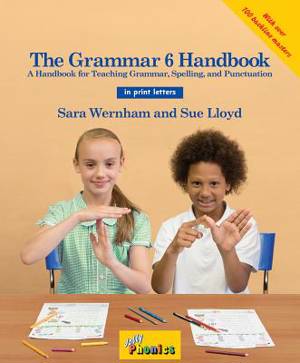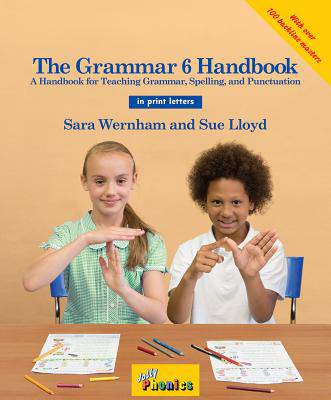
- Afhalen na 1 uur in een winkel met voorraad
- Gratis thuislevering in België vanaf € 30
- Ruim aanbod met 7 miljoen producten
- Afhalen na 1 uur in een winkel met voorraad
- Gratis thuislevering in België vanaf € 30
- Ruim aanbod met 7 miljoen producten
Zoeken
The Grammar 6 Handbook
In Print Letters (American English Edition)
Sara Wernham, Sue Lloyd
Met spiraalrug | Engels
€ 61,45
+ 122 punten
Omschrijving
The Grammar 6 Handbook follows on from The Grammar 5 Handbook and provides revision, consolidation and extension of spelling and grammar rules covered in The Phonics and The Grammar 1, 2, 3, 4 & 5 Handbooks. The Grammar 6 Handbook contains 36 spelling and 36 grammar and punctuation lessons for a full year of teaching children aged 10-11 years. The lessons continue to build upon the knowledge and skills that children have been taught in previous years. There are detailed lesson plans for the teacher to follow, along with a photocopiable sheet that children can complete in class or as homework. Topics covered within The Grammar 6 Handbook include: prefixes & suffixes, in particular numerical; silent letters (bt, te, th); new spelling patterns/rules (ough); schwas (-ity & -ety); more alternatives (they, great, ballet, fete, straight for /ai/); new parts of speech (for example, countable and uncountable nouns, gerunds and modal verbs and imperatives); further punctuation (using semi colons and colons or using a comma after a fronted adverbial); developing a greater understanding of sentence structure and learning to recognise indirect objects, subject complements and passive agents; and introducing children to literary devices such as alliteration, learning the meaning of idioms and distinguishing between formal and informal writing.
Specificaties
Betrokkenen
- Auteur(s):
- Illustrator(s):
- Uitgeverij:
Inhoud
- Aantal bladzijden:
- 234
- Taal:
- Engels
Eigenschappen
- Productcode (EAN):
- 9781844144730
- Verschijningsdatum:
- 1/01/2017
- Uitvoering:
- Met spiraalrug
- Afmetingen:
- 234 mm x 277 mm
- Gewicht:
- 793 g

Alleen bij Standaard Boekhandel
+ 122 punten op je klantenkaart van Standaard Boekhandel
Beoordelingen
We publiceren alleen reviews die voldoen aan de voorwaarden voor reviews. Bekijk onze voorwaarden voor reviews.











